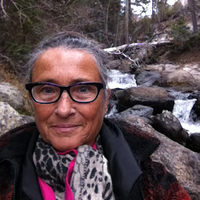Drafts by Alamandha Madhan Kumar

The Government of India (GoI) " Digital India " program, forms the context of this study. The wor... more The Government of India (GoI) " Digital India " program, forms the context of this study. The world of rural poor women organised in microfinance Self Help Groups (SHG)s and their households formed another context of the study. The exploratory study was located in Kottampatti block of Melur Taluka (Madurai district) of Tamil Nadu state. This block had a a nearly three decade long history of functioning microfinance SHGs: with the village economy dependent on an rainfed agriculture ecology: which appears typical of much of rural Tamil Nadu. A total of 121 respondents who were all longstanding members of microfinance SHGs, were studied through the questionnaire method. (n=121): from four hamlets located in three revenue villages (Grama Panchayats).. The Backward Castes, the Most Backward Castes and Other Backward Castes, dominated the respondent profile: with particular communities dominating particular hamlets: which is similar to demographic profiles of villages dependent on rainfed agriculture across rural Tamil Nadu. 87% of the respondents were in the age group 22-50. 74% of the households had 3-5 members. Network failure in accessing digital communication media, appeared to be a localised phenomenon linked to built up spaces or natural barriers like hillocks. Availability of power and facilities for charging mobile phones and internet access equipment did not seem to be an issue. Solar charging facilities though available in the larger market space, did not seem to find favour with the respondents. Digital citizenship was investigated in terms of access to digital identification documents like the 12 digit Aaadhar, issued by the Central Government of India: and the " QR code " household smart card issued by the State Government of Tamil Nadu. (Both linked in Tamil Nadu to a mobile phone number) Digital citizenship appeared to be near universal, which perhaps can be extrapolated to the rest of rural Tamil Nadu. Digital inclusion was assessed in terms of " compulsory access " and " voluntary access ". Compulsory access was defined in terms of the benefits of some Government schemes, being accessed only through electronic means. Central Government programs with relatively high access or universal access: like the rural employment guarantee program (MNREGA), the Public Distribution Systems (PDS) and subsidised cooking gas. (LPG) were studied. The households accessing the internet due to program compulsion of availing the benefits, formed 60% of the sample. (n=72). These households seemed to be relying exclusively on Short Messaging Service (SMS) alerts on numeric pad technology mobile phones with 2G SIM cards for accessing the Government welfare programs. 49/121 (40%) of the households accessed the internet voluntary, in terms of navigating and searching the net. Those households who voluntary accessed the net seemed to have even higher benefits from these " compulsory access " Government schemes, as compared to households which only accessed the internet due to program compulsions. Four " cradle to grave " welfare programs of the State Government of Tamil Nadu, which mandate application through the internet, were investigated. Although, the overall proportion accessing the State Government schemes was much less (around one third to one tenth): here again households voluntarily accessing the internet seemed to have higher access to these State Government schemes. Tamil Nadu has a universal health insurance scheme, for which an identification card is required .Voluntarily accessing households had a higher proportion of houses covered in this insurance scheme, then those accessing only due to program compulsions. (58% to
Interpersonal dynamics is explained
Papers by Alamandha Madhan Kumar










Uploads
Drafts by Alamandha Madhan Kumar
Papers by Alamandha Madhan Kumar